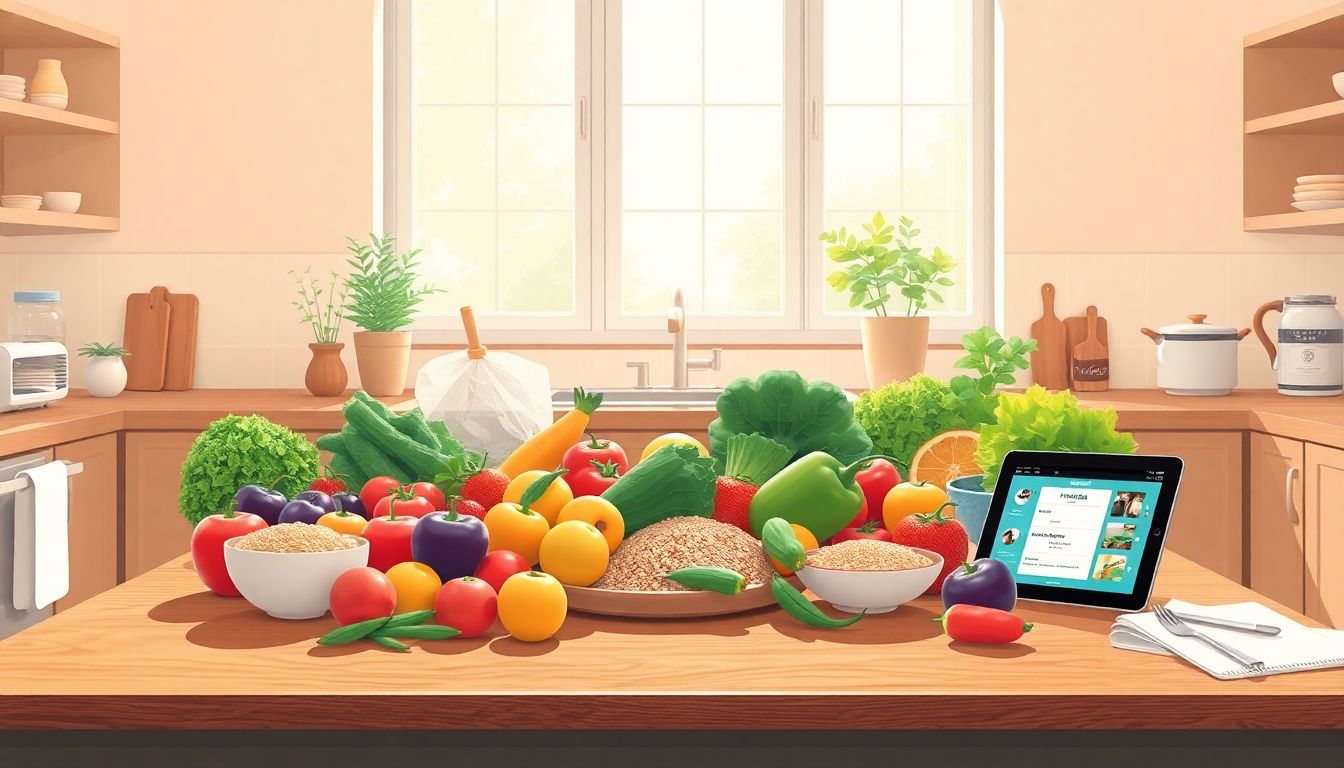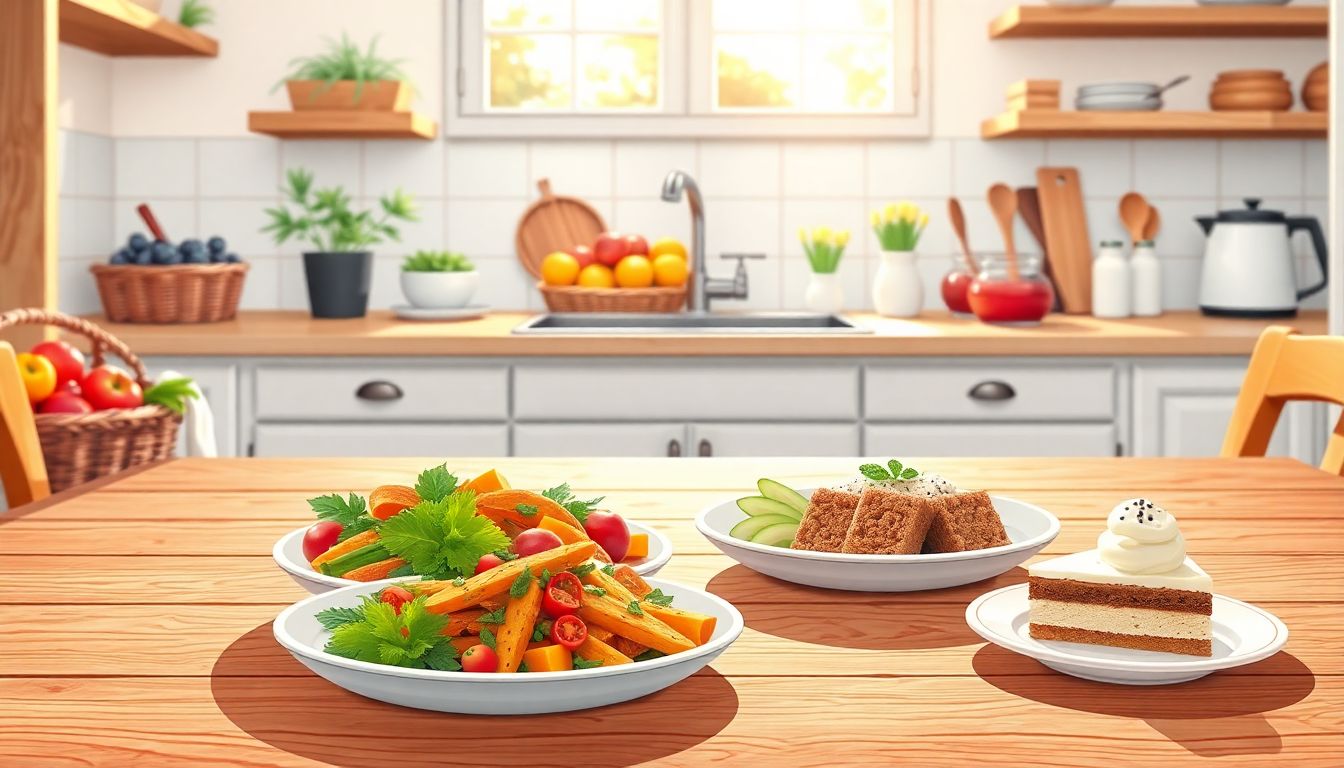Navigating the world of nutrition can be overwhelming, especially with all the conflicting information out there. Shopping for groceries, planning meals, and meeting dietary restrictions can feel like a never-ending puzzle that you’re not quite sure how to solve. Trust me, you’re not alone in this!
But what if I told you there’s a way to simplify your nutrition journey? If you stick around, I’ll share some clever prompts that will help you create personalized meal plans tailored just for you. You’ll see how AI, specifically ChatGPT, can be your best buddy in tackling those nutrition goals with ease.
Let’s dive into how you can effortlessly whip up balanced meal plans, generate healthy recipes, and even stay on track with your goals—all while giving your taste buds the love they deserve!
Key Takeaways
- Use specific prompts in ChatGPT to create personalized meal plans tailored to your dietary needs.
- Request recipe ideas by specifying ingredients, dietary restrictions, and desired nutrition goals.
- Track your nutritional progress by setting clear goals and summarizing daily meals with ChatGPT.
- Ask targeted questions to get meal suggestions that cater to specific dietary restrictions.
- Leverage ChatGPT to generate balanced meal plans that meet essential nutrient guidelines.
- Use prompts to create organized weekly grocery lists based on your meal plans and preferences.

Best ChatGPT Prompts for Creating AI-Driven Nutrition Plans
When it comes to crafting personalized nutrition plans, ChatGPT can be incredibly useful with the right prompts.
Here are some effective prompts to kickstart your AI-driven meal planning:
- “Create a 7-day nutrition plan for a 30-year-old female with a goal of losing weight who enjoys Mediterranean food.”
- “Suggest a high-protein meal plan for someone who exercises regularly and has a vegetarian diet.”
- “Generate a week’s worth of breakfast, lunch, and dinner ideas that are dairy-free and low-carb.”
- “Provide personalized nutrition advice for a busy professional who wants quick and healthy meals.”
- “Design a nutrition-focused meal plan for a family of four with varied dietary preferences.”
These prompts guide the AI to provide tailored recommendations, making your meal planning efficient and specific.
How to Use ChatGPT for Personalized Meal Planning
Using ChatGPT for tailored meal planning is straightforward and can save you a lot of time.
Start by outlining your dietary preferences and restrictions.
Here’s how you can do it in a few simple steps:
- Define your goals: Determine if you’re looking to lose weight, gain muscle, or just eat healthier.
- Specify your dietary restrictions: Include any allergies, intolerances, or preferences (like vegan or paleo).
- Use clear prompts: Say something like, “Give me a meal plan for five days considering my vegan diet and muscle gain goals.”
- Ask for variety: Request a variety of meal options to keep things interesting, e.g., “Suggest different lunch ideas for each day of the week.”
- Request portion sizes: For more detailed plans, prompt, “Include portion sizes for each meal.”
This approach not only personalizes your meal plan but also keeps your nutrition on track.
Prompts for Generating Healthy Recipes with ChatGPT
If you’re in need of fresh, healthy recipe ideas, ChatGPT can help!
Here’s a quick list of prompts you can use to generate nutritious meals:
- “Create a low-calorie dinner recipe using chicken and seasonal vegetables.”
- “Suggest three nutrient-dense breakfast ideas that are high in fiber.”
- “Give me a recipe for a quick, healthy snack that includes nuts and fruits.”
- “Design a dinner recipe that can be prepared in under 30 minutes and is gluten-free.”
- “Provide a vegetarian recipe that packs at least 20 grams of protein.”
These prompts will lead to delicious, healthy recipe ideas that can be tailored to your dietary preferences and available ingredients.
Using ChatGPT to Track Nutritional Goals and Progress
Tracking your nutritional goals with ChatGPT is a game-changer for maintaining focus and accountability.
Here are some strategies to get started:
- Set clear goals: Specify what you want to achieve, like “I want to lose 5 pounds in the next month.”
- Daily log prompts: Use prompts like, “Track my meals today and summarize my calorie intake.”
- Weekly check-ins: Ask, “Can you analyze my weekly food log and suggest improvements?”
- Progress monitoring: Query, “Help me assess if I’m on track with my nutrition goals based on my recent meals.”
This structured approach allows you to monitor your journey effectively and make informed adjustments along the way.

Questions to Ask ChatGPT for Dietary Restrictions and Preferences
When planning meals, knowing how to communicate dietary restrictions is essential.
ChatGPT can help cater to specific needs by employing targeted questions.
Here are some effective prompts to get you started:
- “What are good vegan options for a high-protein meal plan?”
- “Suggest gluten-free snacks for someone with celiac disease.”
- “List low-FODMAP breakfast ideas for digestive health.”
- “Provide a meal plan for a person allergic to peanuts.”
- “Create a dairy-free dessert option that is kid-friendly.”
Using clear questions ensures you receive comprehensive meal suggestions tailored to dietary needs.
Prompts for Creating Balanced Diet Plans with ChatGPT
Achieving a balanced diet is key to overall health, and ChatGPT can help design meal plans that meet nutritional guidelines.
Use these specific prompts to create effective balanced diet plans:
- “Create a balanced meal plan including fruits, vegetables, proteins, and whole grains for the week.”
- “Suggest a daily meal plan that provides 50% carbohydrates, 25% protein, and 25% fats.”
- “Design a meal plan that helps me meet my daily fiber intake of 30 grams.”
- “Provide three balanced lunch ideas that are under 600 calories.”
- “Create an easy meal plan focusing on heart-healthy ingredients for a month.”
These prompts guide ChatGPT to generate meal plans rich in essential nutrients and aligned with your dietary goals.
How to Get Weekly Grocery Lists from ChatGPT
Grocery shopping can be simplified with the right prompts for ChatGPT.
Here’s how to generate an effective weekly grocery list:
- Request a list based on your meal plan: “Generate a grocery list for the following meals: [list of meals].”
- Ask for organization: “Create a grocery list categorized by produce, dairy, protein, and grains.”
- Specify quantities: “Provide a grocery list including quantities needed for a family of four for a week.”
- Inquire about seasonal options: “Suggest seasonal ingredients for my grocery list this week.”
- Seek budget-friendly options: “List affordable ingredients for a week’s worth of nutritious meals.”
These prompts can help you stay organized and make your shopping trips more efficient.

Tips for Leveraging ChatGPT in Nutrition Education
Using ChatGPT as a nutrition education tool can enhance your understanding of food and health.
Start by asking for explanations: “Explain the benefits of a balanced diet in simple terms.”
Use prompts for deeper dives: “What are the key nutrients we need daily, and why are they important?”
Request practical examples: “Give me examples of healthy snacks that provide energy for workouts.”
Encourage interactive learning: “Can you quiz me on nutritional facts and myths?”
Mix educational content with fun: “Share interesting food facts or myths related to nutrition.”
These approaches will help you maximize the information ChatGPT provides in a friendly and engaging manner.
Exploring Different Diet Types with ChatGPT Prompts
Are you curious about different diet types and how they can fit into your lifestyle? ChatGPT can help.
Start by exploring specific diets: “Describe the principles of the Mediterranean diet.”
Request comparisons: “Compare the keto and paleo diets for weight loss.”
Seek tailored recommendations: “What diet would suit someone looking to increase their energy levels?”
Ask for meal ideas within specific diets: “Give me a week’s meal plan for a vegan diet.”
Inquire about nutritional benefits: “What are the health benefits of following a vegetarian diet?”
These prompts will expand your knowledge and help you make informed dietary choices.
ChatGPT Prompts for Meal Prep Ideas and Strategies
Meal prepping can save you time and ensure you stick to your nutrition goals.
Utilize ChatGPT for meal prep strategies with these prompts:
- “Provide a step-by-step guide to meal prepping for the week.”
- “Suggest healthy lunch options that can be batch-prepared and frozen.”
- “What are some quick meal prep ideas for busy weeknights?”
- “List essential kitchen tools for effective meal prepping.”
- “Create a daily meal prep schedule that includes breakfast, lunch, and dinner.”
Using these prompts will help you streamline your meal prep process and stay organized.
Feedback and Adjustments to AI-Driven Nutrition Plans with ChatGPT
Adjusting your nutrition plan based on feedback is crucial for success.
Ask ChatGPT for feedback opportunities: “How can I assess my current meal plan effectiveness?”
Request modification suggestions: “Suggest changes to my meal plan for better nutrient balance.”
Use reflection prompts: “Help me analyze my food choices from last week to improve my diet.”
Inquire about habit tracking: “What tools can I use to track my eating habits effectively?”
Request periodic reviews: “Can you help me revise my goals after one month of following this plan?”
This approach will support continuous improvement and help you achieve your health objectives.
FAQs
ChatGPT can create personalized meal plans by analyzing dietary preferences, restrictions, and nutritional goals, providing tailored suggestions that meet individual needs and preferences efficiently.
ChatGPT can accommodate various dietary restrictions such as gluten-free, vegan, nut-free, and lactose intolerance, ensuring meal plans and recipes align with individual health and lifestyle needs.
Yes, ChatGPT can generate weekly grocery lists based on your meal plans, helping you organize shopping efficiently and ensuring you have all necessary ingredients for your recipes.
ChatGPT can assist in tracking your nutritional goals by logging daily intake, offering insights on progress, and suggesting adjustments or improvements based on your dietary habits and objectives.
